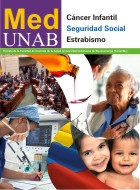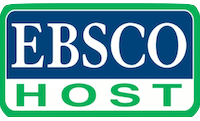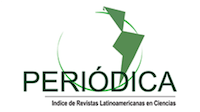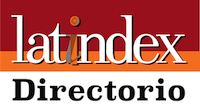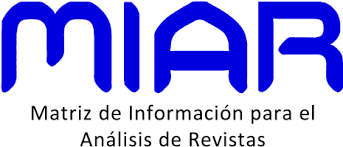Modelo teórico, agentes, estrategias, duración, escenarios para la implementación, grado escolar e indicadores de resultados utilizados en los programas de promoción de la actividad física en el contexto escolar
Resumen
Introducción: El propósito del presente estudio es analizar el modelo teórico, agentes, estrategias, duración, escenarios de implementación, grado escolar e indicadores de resultados, utilizados en los programas de promoción de la actividad física en el contexto escolar desarrollados en el ámbito internacional en los últimos veinticinco años. Método: Se realizó una revisión de los diferentes estudios que desarrollaron programas de actividad física encaminada a la salud en el contexto escolar. Se utilizaron y combinaron diversas estrategias de búsqueda, manuales y electrónicas. Resultados: Siete estudios utilizaron modelos teóricos para el diseño de los programas. Los principales agentes involucrados en la implementación de los programas fueron los docentes de educación física (EF), y los estudiantes. El escenario para la implementación se ubicó básicamente en la clase de educación física. Las estrategias estaban dirigidas principalmente a modificar el currículo de las clases de EF. Las intervenciones se orientaron fundamental-mente a niños de escuela elemental. La duración variaba entre 1 y 12 meses. Los indicadores utilizados para verificar el impacto del programa fueron: incremento en la cantidad de AF, IMC, y peso corporal. La mayor parte de estos estudios se llevó a cabo en escuelas de Estados Unidos, Canadá, India, Reino Unido e Irán. Conclusiones: A pesar de los resultados positivos obtenidos en cada una de las intervenciones, se identificó heterogeneidad: en la metodología, población, actores involucrados e indicadores de eficacia, lo cual no permite realizar comparaciones entre los diferentes estudios.
Referencias bibliográficas
Skybo TA, Ryan N. A School-based intervention to teach third grade children about the prevention of heart disease. J Pediatr Nurs. 2002;28(3):223-35.
Mummery W, Spence J, Hudec J. Understanding physical activity intention in canadian school children and youth: Application of the theory of planned Behavior. Res Q Exerc Sport. 2000;71(2):116-24.
McKenzie L, Sallis J, Elder J, Berry C, Hoy P, Nader P, et al. Physical activity levels and prompts in young children at recess: A two-year study of a bi-ethnic sample. Res Q Exerc Sport. 1997;68(3):195-202.
Wu T, Jwo J. A prospective study on changes of cognitions, interpersonal influences, and physical activity in Taiwanese youth. Res Q Exerc Sport. 2005;76(1):1-10.
Stewart J, Dennison D, Kohl H, Doyle J. Exercise level and energy expenditure in the take 10® in-class physical activity program. J Sch Health. 2004;74(10):397-400.
McKenzie T, Feldman H, Woods S, Romero K. Children´s activity levels and lesson context during third-grade physical education. Res Q Exerc Sport. 1995;66(3):184-94.
McBride N, Midford R, Cameron I. An empirical model for school health promotion: the Western Australian school health project model. Health Promot Int. 1999;14(1):17-25.
Higgings J, Gaul C, Gibbons S, Gyn G. Factors Influencing Physical Activity Levels Among Canadian Youth. Can J Public Health. 2003; 94(1):45-51.
Fowler-Brown A, Kahwati L. Prevention and treatment of overweight in children and adolescents. Am Fam Physician. 2004;69(11):2591-8.
Department of Health and Human Services. Department of Education. Centers for Disease Control and Prevention. National Center for Chronic Disease Prevention and Health Promotion. Dpahpp. Promoting better health for young people through physical activity and sports.
(www.cdc.gov/nccdphp/dash/presphysactrpt). Acceso julio 12, 2009.
Rocha A, Fernandez, JA., . Teorías y modelos utilizados para el diseño de programas de actividad física para la salud. In: Cardenas H, editor. Visiones Sobre medicina Comunitaria. Bogota: Editorial Universidad del Bosque; 2008. p. 241,65.
Westby M, Clarke M, Hopewell S, Ram F. Masking reviewers at the study inclusion stage in a systematic review of health care interventions (Protocol for a Cochrane Review). The Cochrane Library (http://onlinelibrary.wiley.com/doi/10.1002/14651858.MR000019/pdf) Acceso febrero 21, 2009.
Ghersi D, Dickersin K. Impact of shared scientific or ethical review of multicentre clinical research on the quality of clinical research and the clinical research process (Protocol for a Cochrane Review). The Cochrane Library, (http://onlinelibrary.wiley.com/doi/10.1002/14651858.MR000017.pub2/pdf) Acceso febrero 21, 2009.
Clarke M, Stewart L, Tierney J, Williamson P. Individual patient data meta-analyses compared with meta-analyses based on aggregate data (Protocol for a Cochrane Review). The Cochrane Library, (http://onlinelibrary.wiley.com/doi/10.1002/14651858.MR000007/pdf) Acceso febrero 21, 2009.
Vist GE, Hagen KB, Devereaux PJ, Dianne Jackowski, Oxman AD. Outcomes of patients who participate in randomised controlled trials versus those of similar patients who do not participate (Protocol for a Cochrane Review) The Cochrane Library (http://onlinelibrary.wiley.com/doi/10.1002/14651858.MR000009/pdf ) Acceso febrero 21, 2009.
Villanueva EV, Wasiak J. N-of-1 trials for making therapy decisions (Protocol for a Cochrane Review). Journal [serial on the Internet]. 2004 Date; (2): Available from: http://www.update-software.com. Acceso febrero 21, 2009.
Olsen KL, Hopewell S, Dickersin K, Clarke M, Oxman AD. Publication bias in clinical trials (Protocol for a Cochrane Review). The Cochrane Library (http://onlinelibrary.wiley.com/doi/10.1002/14651858.MR000006/pdf ) Acceso febrero 21, 2009.
McDonald S, Crumley E, Eisinga A, Villanueva E. Search strategies to identify reports of randomized trials in MEDLINE (Protocol for a Cochrane Review). The Cochrane Library http://onlinelibrary.wiley.com/doi/10.1002/14651858.MR000018.pub2/pdf ). Acceso febrero 21, 2009
Edwards P, Cooper R, Wentz R, Fernandes J. . Methods to influence the completeness of response to self-administered questionnaires (Protocol for a Cochrane Review). The Cochrane Library, http://onlinelibrary.wiley.com/doi/10.1002/14651858.MR000015/pdf Acceso febrero 21, 2009
Sallis J, McKenzie T, Alcaraz J, Kolidy B, Faucette N, et al. The effects of a 2-year physical education program (SPARK) on physical activity and fitness in elementary school students. Am J Public Health. 1997;87(8):1328-34.
Levin S, Martin M, McKenzie T, DeLouise A. Assessment of a pilot video´s effect on physical activity and heart health for young children. Family and community health. Fam Community Health. 2002;25(3):10-7.
Sahota P, Rudolf M, Dixey R, Hill A, Barth J, Cade J. Randomized controlled trial of primary school based intervention to reduce risk factors for obesity. Br Med J. 2001;323(7320):1029-32.
Dale D, Corbin C. Physical activity participation of high school graduates following exposure to conceptual or traditional physical education. Res Q Exerc Sport. 2000;71(1):61-8.
Reinhardt W, Brevard P. Integrating the food guide pyramid and physical activity pyramid for positive dietary and physical activity behaviors in adolescents. J Am Diet Assoc. 2002;102(3):S96-S9.
Beets M, Pitetti K. Contribution of physical education and sport to health-related fitness in high school students. J Sch Health. 2002;75(1):25-30.
Nabipour I, Miami S, Mohammadi M, Heidari G, Bahramian F, et al. . A school-based intervention to teach 3-4 grades children about healthy heart, The Persian gulf healthy heart project. Indian J Med Sci. 2002;72(5):199-204.
Hutchinson G, Freedson P, Ward A, Rippe J. Ideal to real. Implementing a youth fitness program. Journal of Physical Education, Recreation & Dance 1990;;61(6):52-8.
Marston R. Addressing the university´s tripartite mision through an early childhood movement program. Journal of Physical Education, Recreation & Dance. 2002;73(5):35-41.
Staunton CE, Hubsmith D, Kallins W. Promoting safe walking and biking to school: The Marin county success story. Am J Public Health. 2003;93(9):1431-4.
Harrell JS, McMurray R, Gansky S, Bangdiwala S, et al. A public health vs a risk-based intervention to improve cardiovascular health in elementary school children,the cardiovascular health in children study. Am J Public Health. 1999;89(10):1529-35.
Harrell J, Gansky S, McMurray R, Bangdiwala S, Frauman A, Bradley C. School based interventions improve heart health in children with multiple cardiovascular disease risk factors. Pediatrics. 1998;102(2):371-80.
Leslie J, Yancy A, McCarthy W, Albert S, et al. Development and implementation of a school-based nutrition and fitness promotion program for ethnically diverse middle-school girls. Am J Public Health. 1999;99(8):967-70.
Bayne M, Fardy P, Azzollini A, Magel J, Schmitz K, Agin D. Improvements in hearth health behaviors and reduction in coronary artery disease risk factors in urban teenaged girls through a school-based intervention: The PATH program. . Am J Public Health. 2004;94(9):1538-43.
Pangrazi R, Beighle A, Beige T, Vack C. Impact of promoting lifestyle activity for youth (PLAY) on children´s physical activity. J Sch Health. 2003;73(8):317-21.
Caballero B, Clay T, Davis S, Ethelbah B, Rock B. Pathways: a school-based, randomised controlled trial for the prevention of obesity in American Indian school children. Am J Clin Nutr. 2003;78::1030-8.
Agron P, Takada E, Purcell A. California project LEAN´s food on the run program: An evaluation of a high school-based student advocacy nutrition and physical activity program. J Am Diet Assoc. 2002;102(3):103-5.
Levin S, Martín M. Catch the Catawba SPARK: Physical activity for head start youths. Journal of Physical Education, Recreation & Dance. 2002;73(3):39-42.
Flores R. Dance for health:Improving fitness in African American and hispanic adolescents. Public Health Rep. 1995;110(2):189-93.
Calderón L. Promoting a healthful lifestyle and encouraging advocacy among university and high school students. J Am Diet Assoc. 2002;102(3):71-2.
Felton G, Saunders R, Ward D, Dishman R. Promoting physical activity in girls: A case study of one Sschool´s success. J Sch Health. 2005;75(2):57-62.
Warren J, Lightowler S, Bradshaw M, Perwaiz S. . Evaluation of a pilot programme aimed at the prevention of obesity in children. Health Promot Int. 2003;18(4):287-96.
Werch C, Moore M, DiClemente CC, Owen D, et al. A sport-based intervention for preventing alcohol use and promoting physical activity among adolescents. J Sch Health 2003;73(10):380-8.
McBride N, Midford R. Encouraging schools to promote health: Impact of the western Australian school health project (1992-1995). J Sch Health. 1999;69(6):220-6.
Dzewaltowski D, Esabrooks P, Johnston J. Healthy youth places promoting nutrition and physical activity. . Health Educ Res. 2002;17(5):541-51.
Virgilio SJ, Berenson GS. SUPER KIDS-SUPERFIT. A comprehensive fitness intervention model for elementary schools. Journal of Physical Education, Recreation & Dance. 1998;59(8):19-25.
Petosa RL, Suminski R, Hortz B. Predicting vigorous physical activity using social cognitive theory. Am J Health Behav. 2003;27(4):301-10.
The Canadian Assotiation for Health Physical Education Recreation and Dance. Quality daily physical education program in school 1989 http://www.phecanada.ca/programs/quality-daily-physical-education) Acceso abril 25, 2009.
Department of Health and Human Services. Department of Education. Centers for Disease Control and Prevention. National Center for Chronic Disease Prevention and Health Promotion. Promoting Better Health for Young People Through Physical Activity and Sports; 2000 Contract No.: Document Number|.
Working Group on Physical Activity for Children and Youth, Nova Scotia Sport and Recreation Commission, Nova Scotia Department of Health Public Health Services, Nova Scotia Department of Education English Program Services. Active kids, healthy kids a nova scotia physical activity strategy for children and youth. NOVA SCOTIA. 2002:5-16.
Department of Health and Human Services. Department of Education. Centers for Disease Control and Prevention. National Center for Chronic Disease Prevention and Health Promotion. Guidelines for school and community programs to promote lifelong physical activity among young people. 1997( http:www.cdc.gov./mmwr/preview/mmwrhtml/00046823.htm) Acceso enero15,2009
Prieto A. Modelo de Prevención de la salud, con enfasis en Actividad física, para una comunidad estudiantil universitaria. . Rev Salud Publica. 2003;5(3):284-300.
Descargas
Derechos de autor 2022 MedUNAB

Esta obra está bajo una licencia internacional Creative Commons Atribución-NoComercial 4.0.
| Estadísticas de artículo | |
|---|---|
| Vistas de resúmenes | |
| Vistas de PDF | |
| Descargas de PDF | |
| Vistas de HTML | |
| Otras vistas | |



